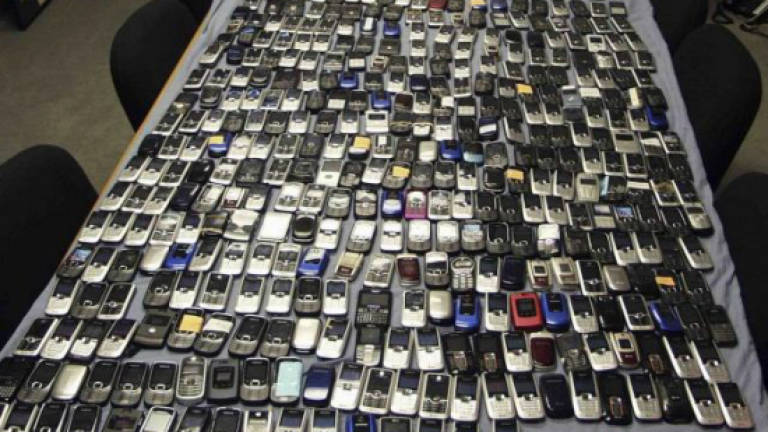Old mobile phones a health hazard

MANY of us would be reluctant to discard mobile phones or smart devices that are no longer usable.
Perhaps they had cost us a small fortune to obtain or maybe some of us simply like hoard things, so we leave them around the house.
This writer herself had trouble letting go of her now inoperable Blackberry Curve.
Although during its lifespan the device was problematic, in its death it was kept safely in the corner of a drawer.
This was because this writer had spent some time saving up to buy the device.
There are those who would gladly send in their unusable devices for recycling – for the right price.
"It didn't come cheap. So why should I let it go for free? People can get money even for recycling old newspapers, what more electronic goods," reasoned a man who wanted to be known only as Izaini.
What many do not know is that keeping unusable SIM-based devices and accessories at home or disposing of them improperly is hazardous to their health as well as the environment.
Toxic fiend
"Many people are unaware of what happens to their mobile phones after it becomes unusable. So they keep it around the house or dispose of it along with other forms of waste. However, this is a wrong way to deal with e-Waste," said the Head of the Technology Development Department of the Malaysian Communications and Multimedia Commission (MCMC), Badaruzzaman Mat Nor.
This is because mobile phones and other electrical items are made up of parts that cannot biodegrade and will leach toxic materials over time.
This includes lead, which can damage the central nervous system, cause kidney failure, headaches and memory loss, and mercury that damages skin, disrupt kidney function and cause insomnia.
"A WHO and United Nations University study on "e-Waste and its Health Implications on Children" found that exposure to e-Waste leads to a number of diseases like cancer and respiratory problems," he said.
A valid cause for concern
If these e-Wastes are stored in drawers and cupboards at home and chemicals start to leak from them, they could harm those who come into contact with them.
Children could easily become exposed to such leaks and accidentally ingest them.
The chances of this happening are higher than we think, as millions of smart devices are being manufactured and sold every day.
Every new day sees the emergence of devices with hundreds of sophisticated functions, fuelling consumer desire and spending.
Statistics from Sirim QAS International Sdn Bhd revealed that 65.7 million mobile phones were registered in the country between 2009 and 2014.
However, like many other electronic goods these days, mobile phones do not last long.
Badaruzzaman said the US Environmental Protection Agency estimated the lifespan of a mobile phone to be around 18 to 24 months.
"So where do these 65.7 million unit of mobile phones go? Based on that timeline, they would have become e-Wastes. And the figure does not even take into account the number of mobile phones brought into the country without any record.
Is recycling a sustainable option?
According to the Department of Environment webpage, most of household e-Wastes are sent for recycling.
This sounds like a positive thing, but the fact is that the current method for recycling e-Waste is not sustainable.
The waste are burned to extract valuable metals from cables and wires and this causes air pollution.
The less valuable components, meanwhile, are illegally discarded at landfills.
When e-Wastes are mixed with other forms of waste at landfills, it would cause the toxic materials within it to leach into the soil surface and pollute it as well as water.
This is a grave cause for concern because at the moment, out of the 161 landfills in Malaysia only 14 are sanitary landfills.
This is according to the data by the Solid Waste Management and Public Cleansing Corporation (SwCorp
Malaysia).
The non-sanitary landfills will cause pollution because it is not equipped with liner-covered cells and leachate treatment plants.
"Guiyu in China is known as the World e-Waste Capital. Studies found that 82% of the children in the district had respiratory problems and face high risk of lead poisoning due to improper recycling," he said.
Old phone, new life
Malaysia is dealing with the problem by drafting a regulation for the management and handling of discarded electronic materials (e-Waste), which will be ready by 2018.
The Minister of Natural Resources and Environment Datuk Seri Dr Wan Junaidi Tuanku Jaafar was quoted as saying that the regulation was necessary as Malaysia has yet to have a dedicated regulation for the handling of e-Waste.
What it has at the moment is only a system for handling industrial e-Waste.
Malaysia would also be introducing the Extended Producer Responsibility programme where manufacturers would be held responsible for the sustainable management of its products' e-Waste.
MCMC, as the supervisory body for the communications and multimedia industry, is already complementing the initiative with its recycling programme for used mobile devices.
The Mobile e-Waste: Old Phone, New Life was launched in August 2014 to encourage sustainable recycling for used devices.
"We can see that the number of mobile phone users are increasing by the day.
This programme will help towards the preservation of the environment," said Badaruzzaman. — Bernama
(More information can be found on mobileewaste.mcmc.gov.my, the Facebook page facebook.com/mobileewaste, the Instagram page mobileewaste or twitter.com/mobileewaste.